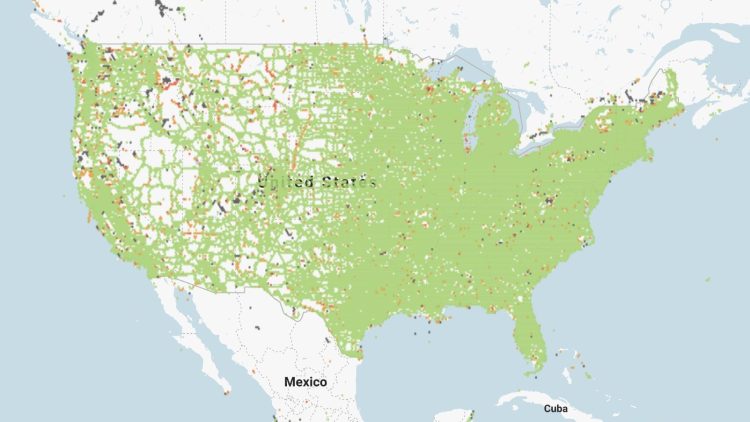RootMetrics is one of only a handful of independent firms that have spent years tracking major carriers’ cellular networks on a city-by-city basis, and its new report may provide the final look at the performance of U.S. 4G networks before the 5G era. The conclusion: America’s first 20 5G cities are “all over the map” in terms of network performance, but at least four-fifths of them are already strong 4G performers, and they’re only going to get better in the very near future.
Between Verizon, AT&T, T-Mobile, and Sprint, the list of initial 5G cities generally spans large and recognizable metropolitan areas, but 4G performance isn’t necessarily or even generally better in the largest cities. Instead, cities such as New York City (#79) and Los Angeles (#85) rank in the bottom half of 125 cities tested by RootMetrics for overall performance, while other major metros such as Atlanta (#50), Houston (#53), and Washington, D.C. (#57) are still in the bottom two-thirds.
But even a city with Washington’s middling rank still has solid 4G performance, according to RootMetrics’ findings. The company said AT&T had the area’s fastest median download speed at 38.5Mbps, yet ranked third overall behind first-placed Verizon and second-placed AT&T. The lowest-ranked early 5G recipient, Oklahoma City (#104), was led by T-Mobile’s 26.5Mbps median download speed, with Verizon and AT&T close behind.
In the 5G era, each of these cities will see dramatic network improvements, likely delivering between 10 and 20 times current performance levels. Verizon initially promised that its “typical” 5G service will average 300Mbps with a 1Gbps peak, subsequently stating that the average number will likely double this year. AT&T, T-Mobile, and Sprint have each floated tentative initial 5G numbers in the 300-450Mbps range as well.
June 5th: The AI Audit in NYC
Join us next week in NYC to engage with top executive leaders, delving into strategies for auditing AI models to ensure fairness, optimal performance, and ethical compliance across diverse organizations. Secure your attendance for this exclusive invite-only event.
What this means is that while service levels may even out somewhat across cities, the 4G to 5G change will be more apparent in some places than others. In #1-rated Kansas City, the fastest median download speed of 50.8Mbps is already almost twice what Oklahoma City residents see, but 5G could still boost that performance level by a factor of six or more. Similarly, Chicago’s 36.9Mbps peak was the best for a large city, but could well be boosted by seven or more times by 5G.
As expected, great baseline 4G performance is both a positive and a negative for 5G. It could make satisfied 4G customers less likely to upgrade, but also provide a firmer fallback for 5G customers whenever they’re not connected to a carrier’s fastest network.
The full RootMetrics second half 2018 report is here. If you’re interested in diving into the specifics of your favorite cities, you can do so here. Notably, the rankings go beyond speeds to discuss each city’s call and texting performance, network reliability, and other factors that also matter to consumers, though improved bandwidth and reduced latency for data will be 5G’s key selling points.

